
Mixing metals in your bathroom is an excellent way to add a sophisticated and interesting look to the space. This article will walk you through a simple guide on how to mix different metals in the bathroom.
If you are planning on renovating your bathroom, I hope you will find some inspiration for mixing metals in the bathroom in this post!
But First, Is It Okay To Mix Metals In The Bathroom?
The answer is YESSS! There was a time where a bathroom with mixed metals was considered a design no-no. However, now, as interior design has become more personal and styles are becoming more diverse and eclectic, mixing metals in bathrooms has now become a trend.
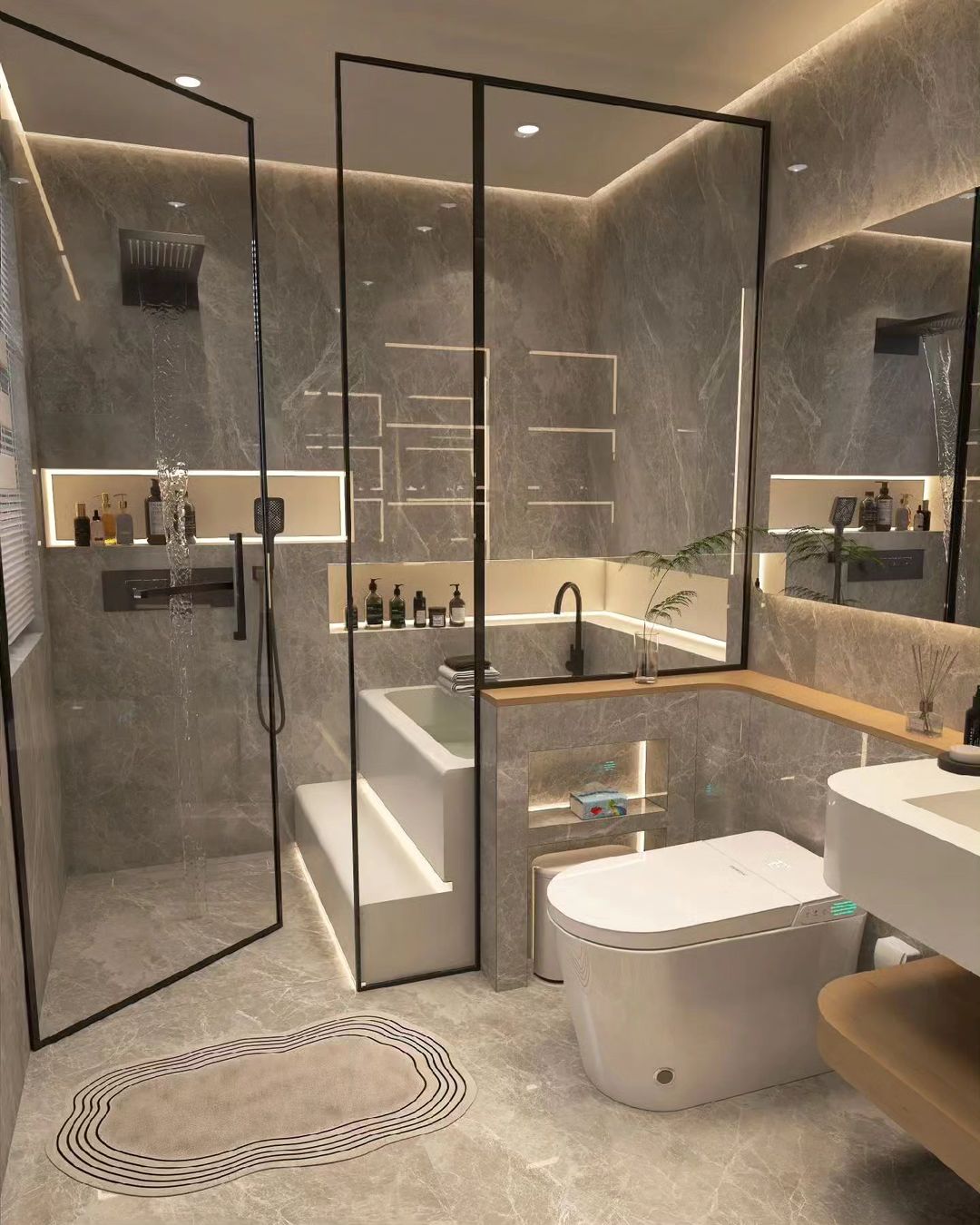
Image by vrishtidesigns
But, how and where to mix the metals? The below guide will help you perfectly mix metals in the bathroom.
How To Mix Metals In A Bathroom?
Step 1: Select At Most Three Metal Finishes In One Room
To perfectly mix metals in the bathroom, be mindful of where you want to place the finishes. Too many different metals can end up making your bathroom feel like you have used leftover materials. So, its best to use two or three metal finishes.
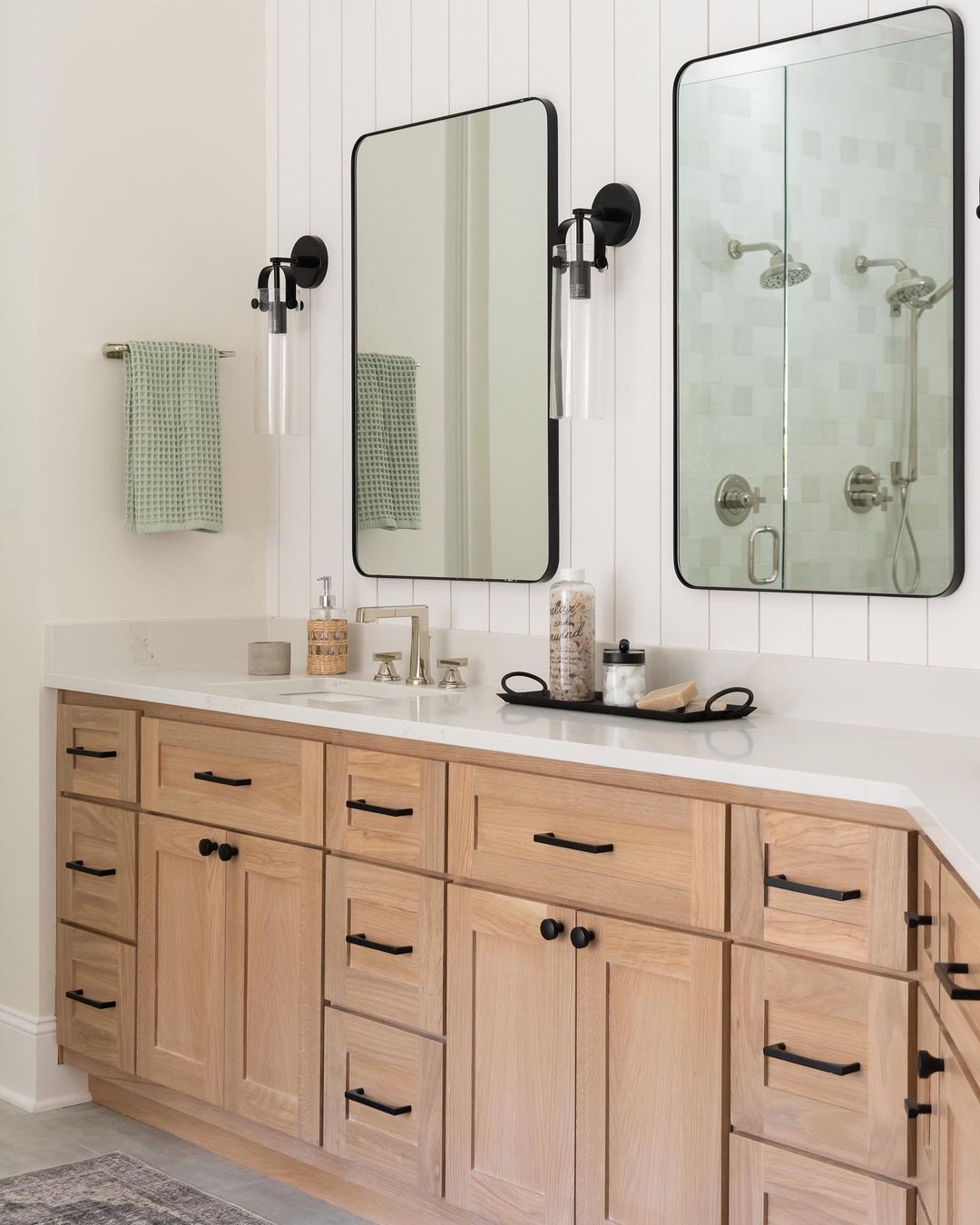
Image by ksneeddesign
Step 2: Metal Tones And Metal Finishes Should Be The Same
When using metals to decorate your bathroom, it is important to create harmony by understanding the characteristics of metal tones and finishes. Metals used in the bathrooms generally fall into two categories: shiny or muted finishes and warm or cool tones.
Shiny Finishes: Metals with shiny finishes add a touch of brightness and polish to a space. Examples of some shiny finishes are shiny chrome faucets, bright copper pots, or gleaming brass knobs.
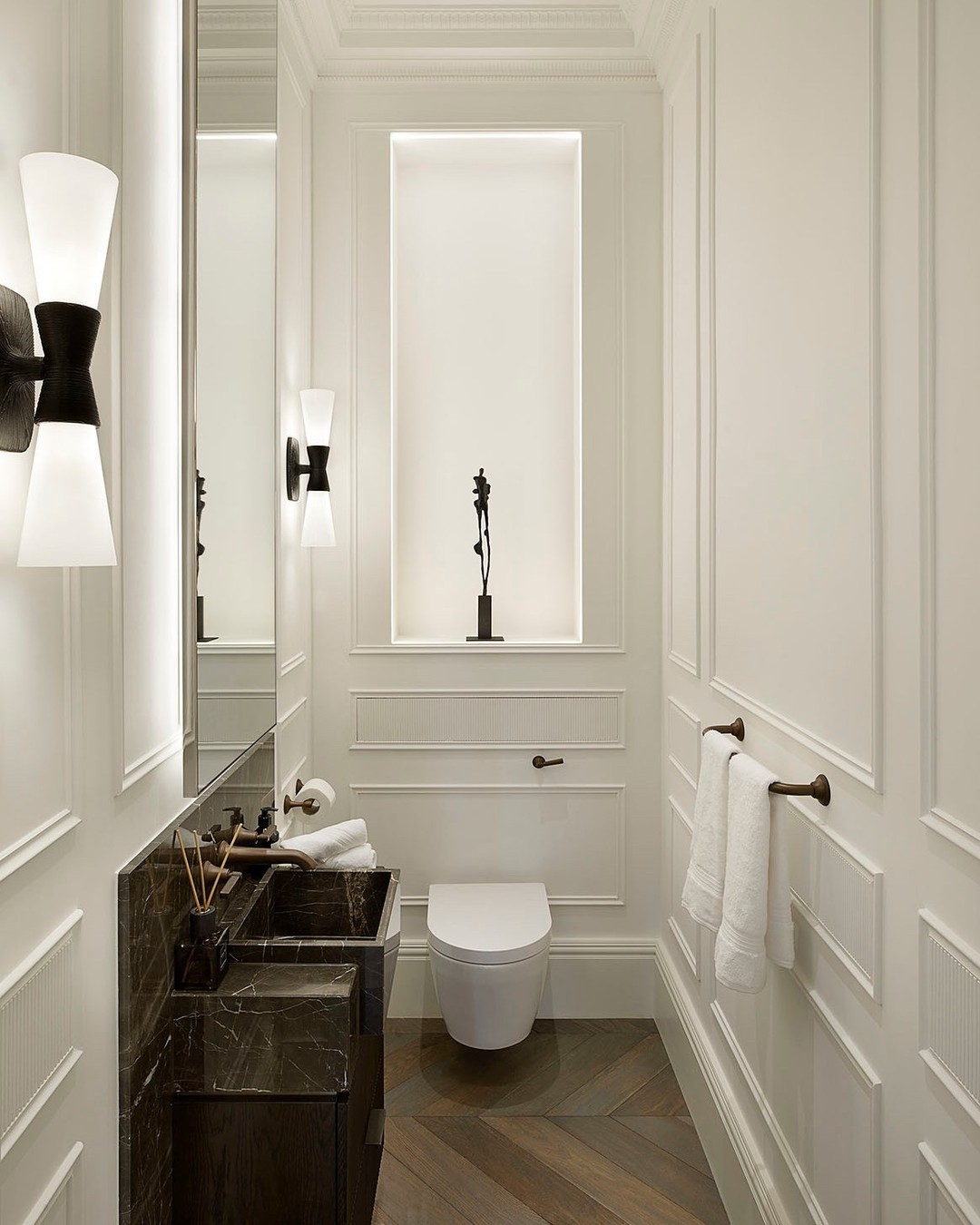 Image by laurahammett.interiors
Image by laurahammett.interiors
Muted Finishes: Metals with muted finishes have a softer and more understated look. Think of aged brass with a natural patina, brushed nickel, and dark metals like gunmetal, or pewter.
In terms of tones, metals are available either in warm or cool tones.
Cool Metals: These metals have a blue undertone/ They bring a sleek and modern touch to your space. Examples of some cool metals are chrome, polished nickel, gunmetal, black metal, and pewter.
Warm Metals: these metals have a gold undertone. They add warmth and richness to your bathroom. Some of the warm metals include shiny brass, brass sconces, copper accent metal, oil-rubbed bronze and black.
3. Select a Dominant Metal
To go with one flow, use the metal finishes in a way where there is one dominant finish. Repetition is a great way to create a good design and having one of the metals repeated throughout the room helps in tying the entire design together.
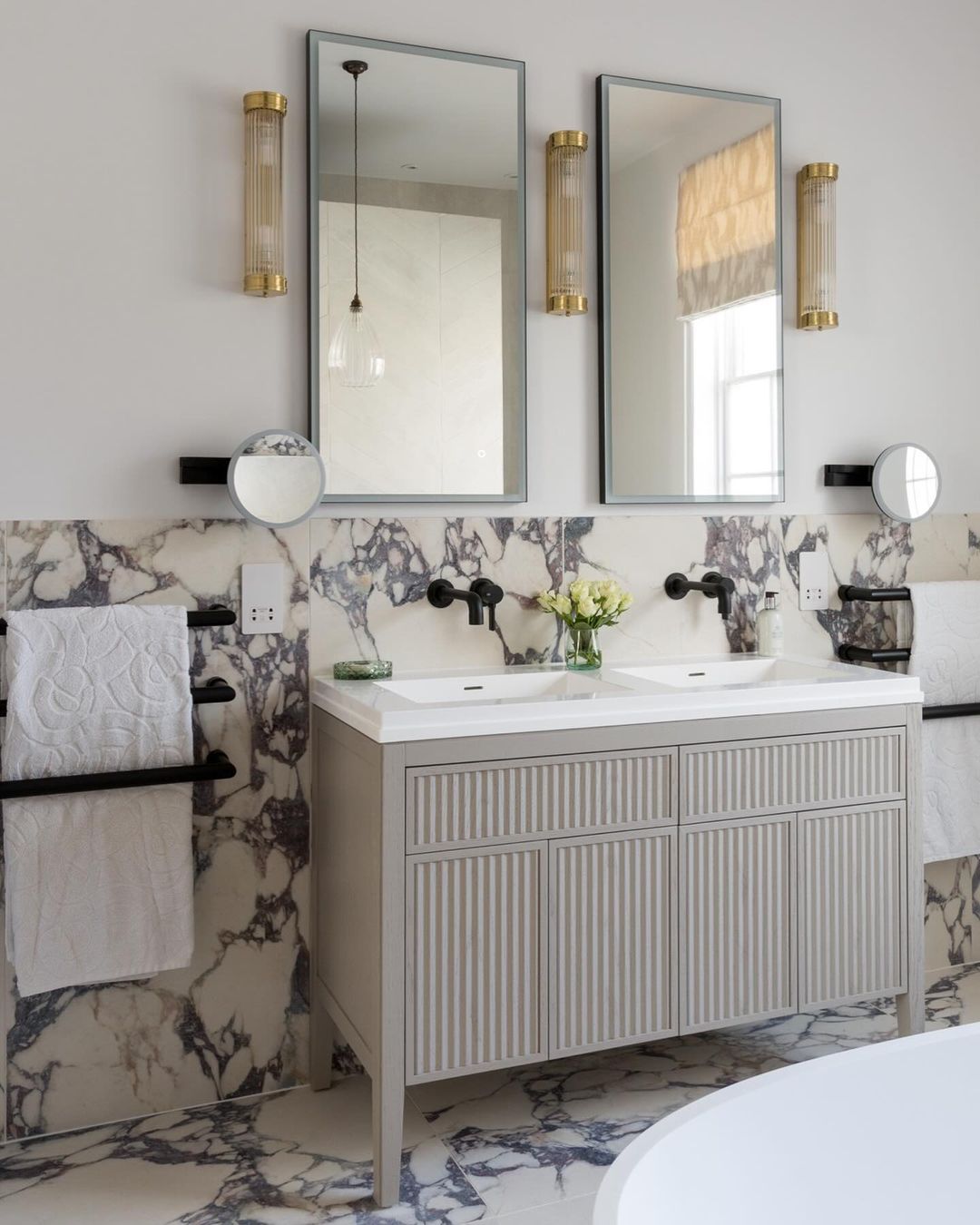
Image by jarvisrayes_interiors
Here’s what Adam New, Principal Owner, The Cash Offer Company has to say about this tip.
“A specific approach I have used to successfully incorporate mixed metals in a bathroom design is by selecting one dominant metal and using the other as an accent. This creates balance and ensures that the metals complement each other, instead of competing. One challenge I faced was finding the right combination of metals that would work well together. To overcome this, I researched different metal finishes and experimented with various combinations until I found the perfect mix. I also consulted with interior designers and colleagues to gather their insights and recommendations.
Stick to 2–3 different metal finishes. Too many can overwhelm the space and make it look cluttered. Choose one dominant metal that will be used for larger fixtures, such as faucets, showerheads, and towel racks. Use the other metal as an accent in smaller details, like cabinet hardware, light fixtures, or decorative accessories.”
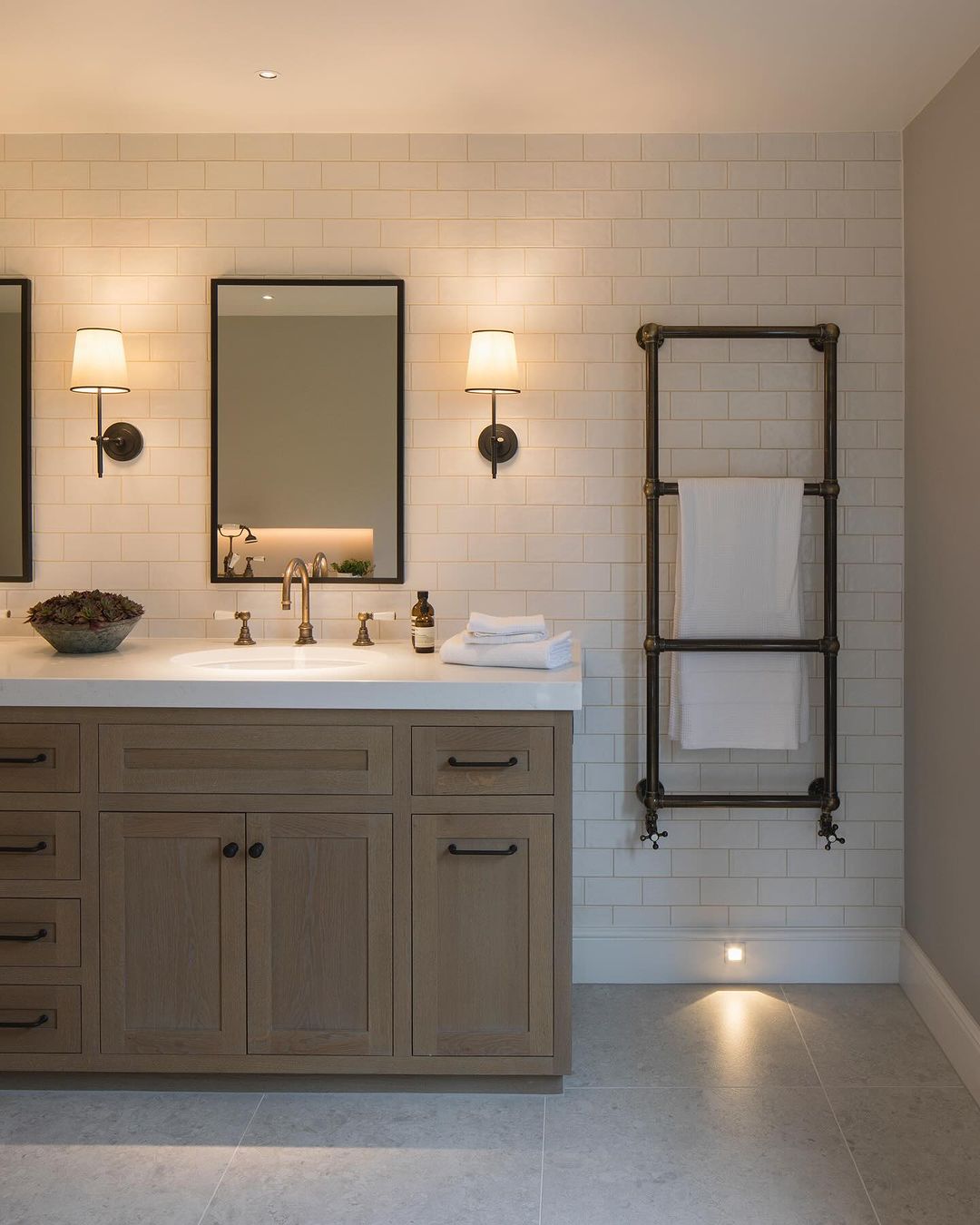
Image by islajamesinteriors
4. Let the Metal Finishes On Plane Be The Same
Try to keep the metal finishes in one level or place the same. For example, on the vertical shower wall, if the faucet, shower head, and spout are in the champagne bronze finish, then let the robe hooks on the adjacent wall be of the same champagne bronze finish.
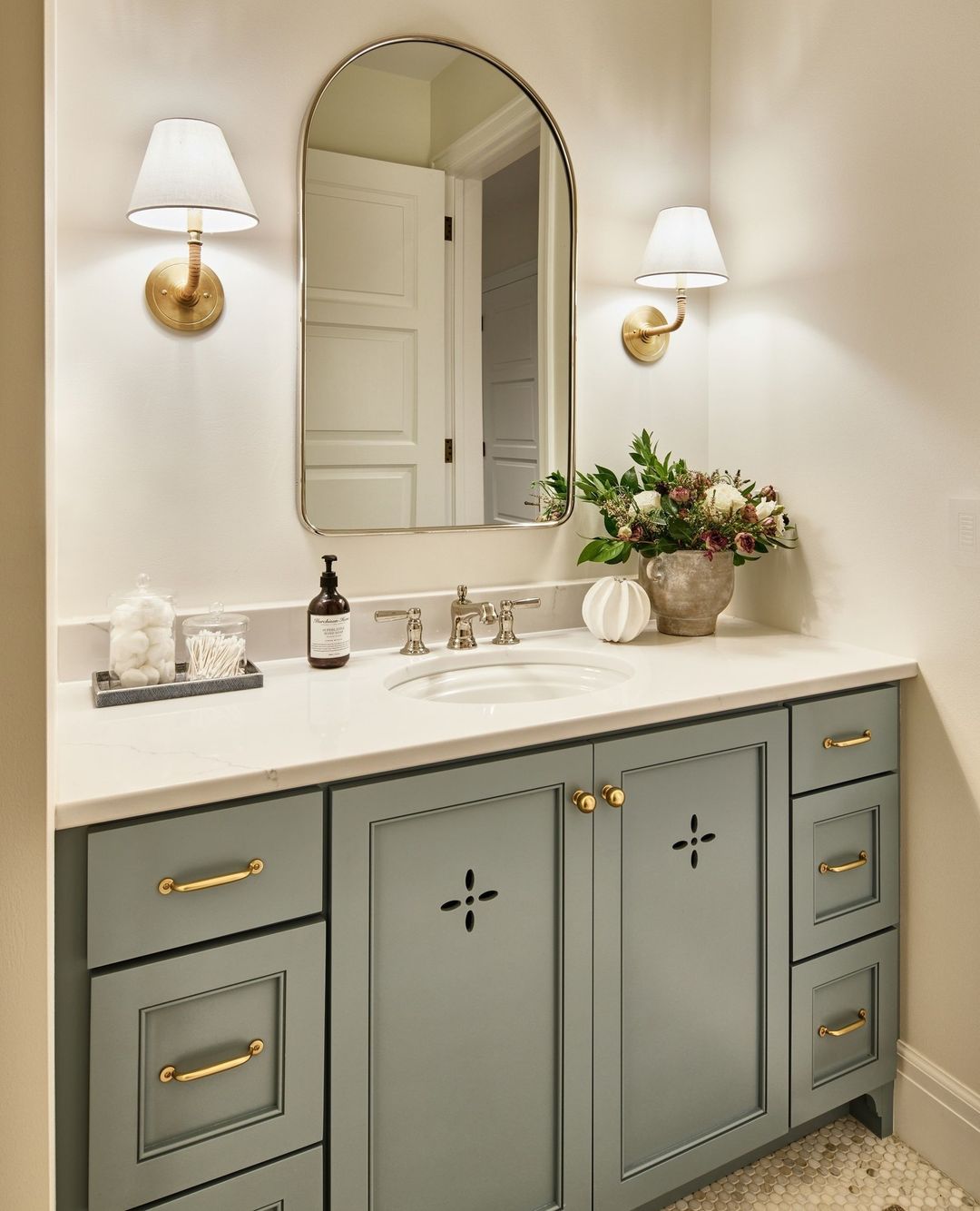
Image by lexiwestergard_design
Similarly, let all the handles on the vanity have the same metal finish. Having mixed metals on the same plane may look very inconsistent. However, you can mix different cabinet pulls shapes.
5. Balance Chrome and Brushed-Nickel Accents
Here’s what Aaron Alway, President, Black Label Design Group is saying about balancing chrome and brushed nickel accents.
“In designing luxury custom homes, I’ve found that incorporating mixed metals in bathroom designs requires a careful balance to achieve harmony. One approach I’ve used successfully was combining chrome fixtures with brushed-nickel accents. This pairing creates a subtle contrast that adds depth without overwhelming the space. The challenge was ensuring that the hues complemented the existing tile and cabinetry, which I resolved by selecting a neutral color palette for the room.
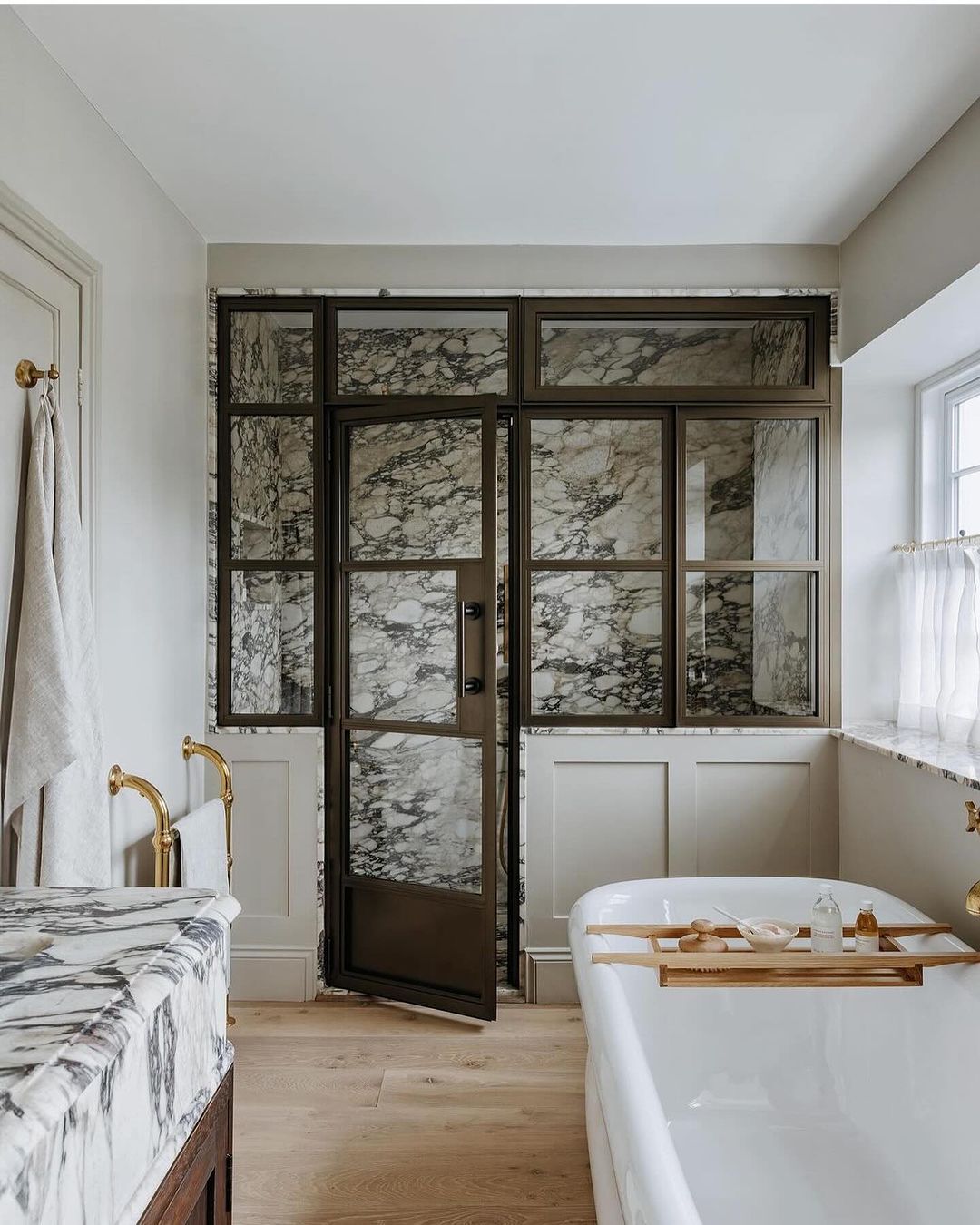
Image by ashleytstark
During a project in Bend, Oregon, a homeowner loved the idea of adding a vintage touch. We introduced antique-brass vanity mirrors to the mix. This brought warmth and character and was tied in with matching light fixtures. It was crucial that the dominant metal, chrome, was less reflective to allow the brass to stand out without clashing.
To ensure a cohesive look, always test metal finishes under your bathroom’s specific lighting conditions. Keep the number of metal types to three at most to maintain clarity in your design. This ensures that each element works in concert, enhancing the bathroom’s overall aesthetic.”
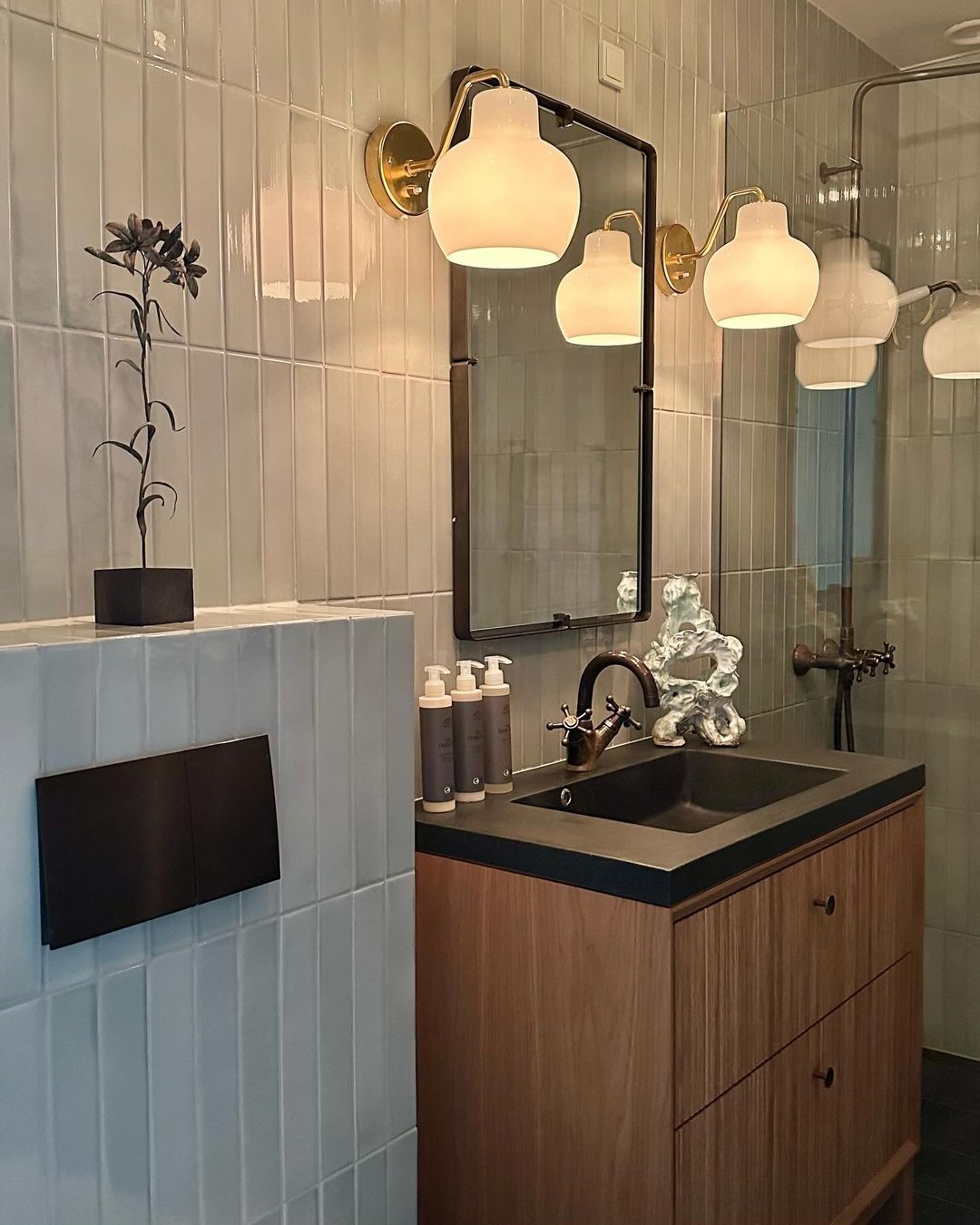
Image by thedarlingcph
Conclusion
Now that I have shared a few tips and tricks on how and where to mix metal finishes, here’s a few metal pairing that the experts think work better. These suggestions help to create a mixed metal bathroom that is perfectly balanced.
- Black faucets and black shower kit with polished brass pulls and knobs
- Polished nickel polished nickel faucets and shower with Brushed gold pulls and knobs
- Shiny brass shower and faucet with Polished chrome pulls and knobs
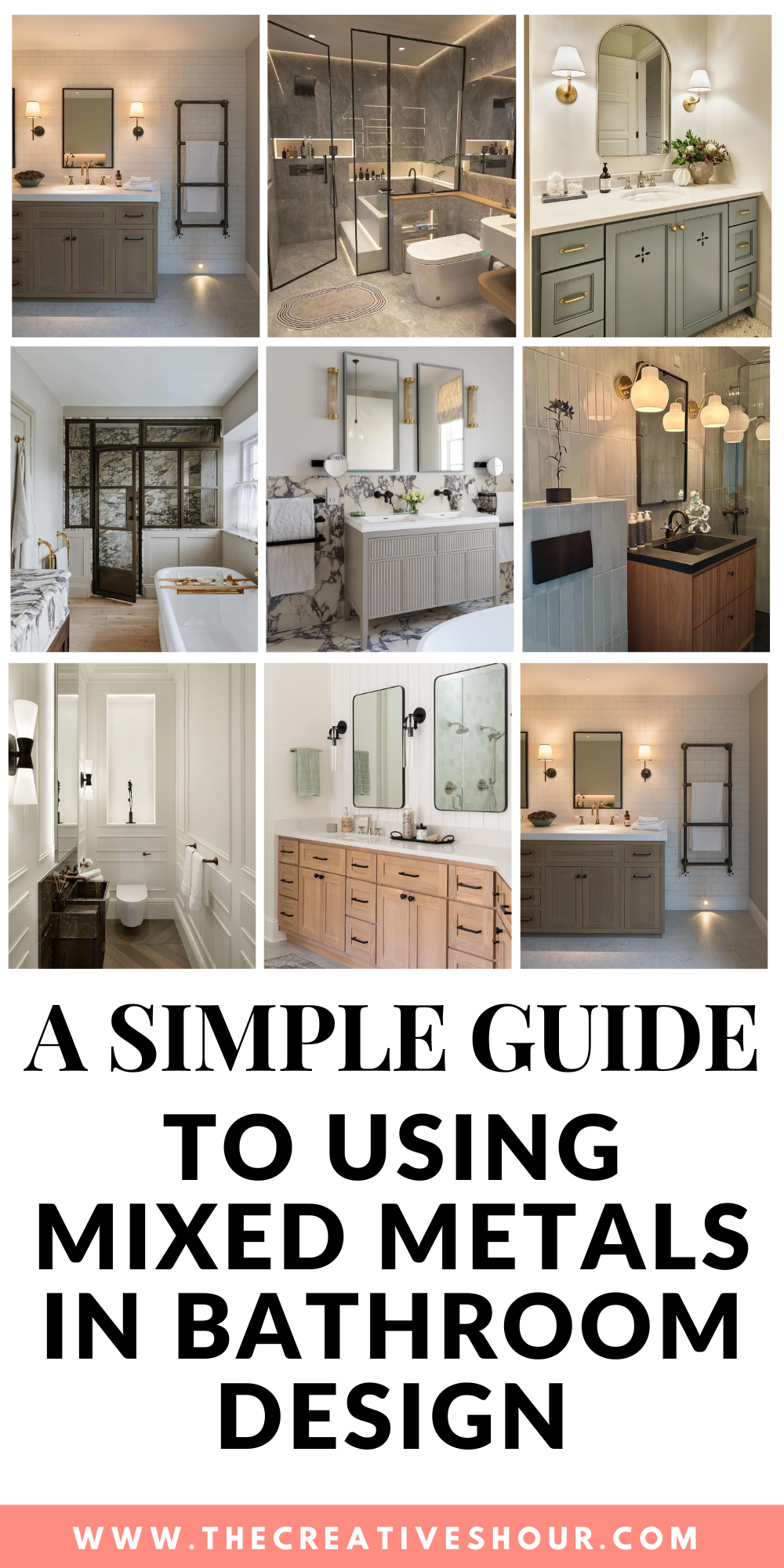
If you love these ideas, don’t forget to pin the above image to your “Home and Garden” board.
